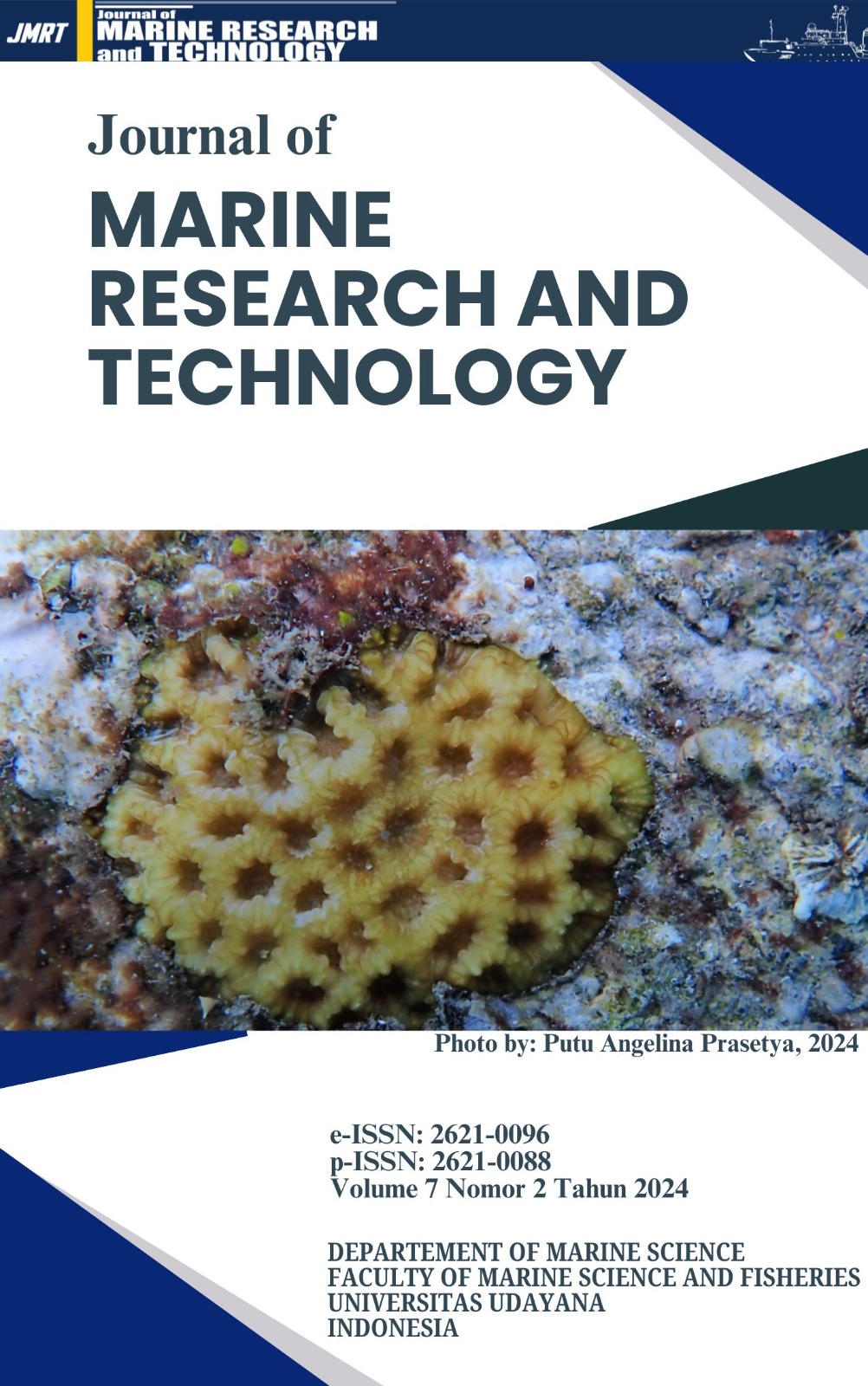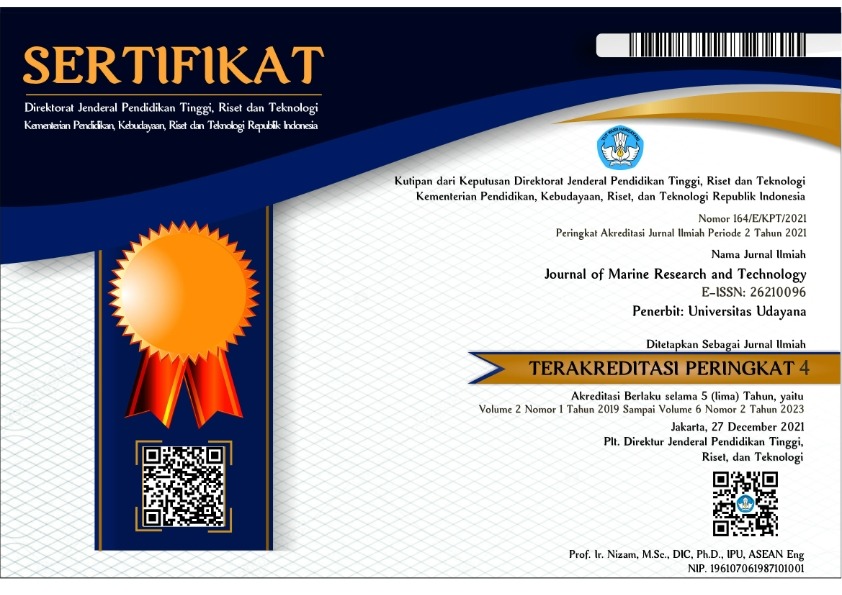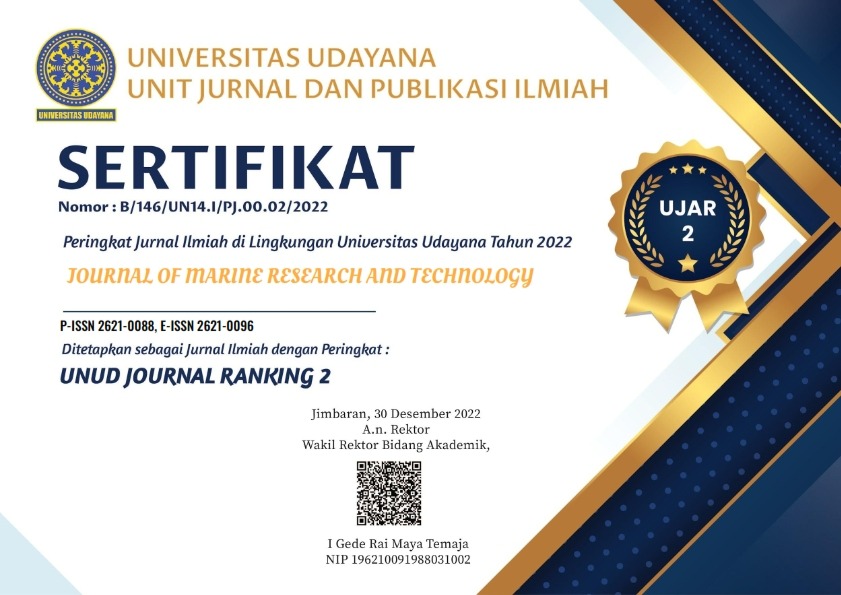Variabilitas Lapisan Termoklin Berdasarkan Fenomena Indian Ocean Dipole (IOD) Di Perairan Barat Sumatera
West Sumatra; Thermocline; Sea Surface Temperature
Abstract
This study analyzes the impact of the Indian Ocean Dipole (IOD) phenomenon on the variability of the thermocline layer in the waters off the western coast of Sumatra. The aim of this research is to investigate changes in the thermocline layer and the distribution of sea surface temperature (SST) during both positive and negative IOD phases over a 25-year period (1997–2021). The research employs a descriptive quantitative method. Data processing was performed using PyFerret software to analyze the distribution of SST and the horizontal spread of the thermocline layer. Ocean Data View (ODV) software was used to determine the upper and lower boundaries as well as the thickness of the thermocline. The results indicate that during positive IOD years, the average SST ranges from 28.7°C to 29.3°C, with the upper thermocline boundary at 43.29 m, the lower boundary at 128.82 m, and a thickness of 85.53 m. In contrast, during negative IOD phases, the average SST ranges from 29.2°C to 29.4°C, with the upper thermocline boundary at 60.32 m, the lower boundary at 162.83 m, and a thickness of 102.51 m. The thermocline is deeper during negative IOD phases, with relatively warmer average SSTs compared to positive IOD phases.
Downloads
References
Juniarti, L., Jumarang, M. I., & Apriansyah, A., 2017, Analisis kondisi suhu dan salinitas perairan barat Sumatera menggunakan data Argo Float, Physics Communication, 1(1), 74-84.
Kunarso, K., Hadi, S., Ningsih, N. S., & Baskoro MS., 2012, Variabilitas suhu dan klorofil-a di daerah upwelling pada variasi kejadian ENSO dan IOD di perairan selatan Jawa sampai Timor, Ilmu Kelautan: Indonesian Journal of Marine Sciences, 16(3), 171-180.
Saji, N. H., Goswami, B. N., Vinayachandran, P. N., & Yamagata, T., 1999, A dipole mode in the tropical Indian Ocean, Nature, 401(6751), 360-363.
Copyright Notice
The copyright to this article is transferred to Journal of Marine Research and Technology (JMRT). The copyright transfer covers the exclusive right and license to reproduce, publish, distribute and archive the article in all forms and media of expression now known or developed in the future, including reprints, translations, photographic reproductions, microform, electronic form (offline, online) or any other reproductions of similar nature.






